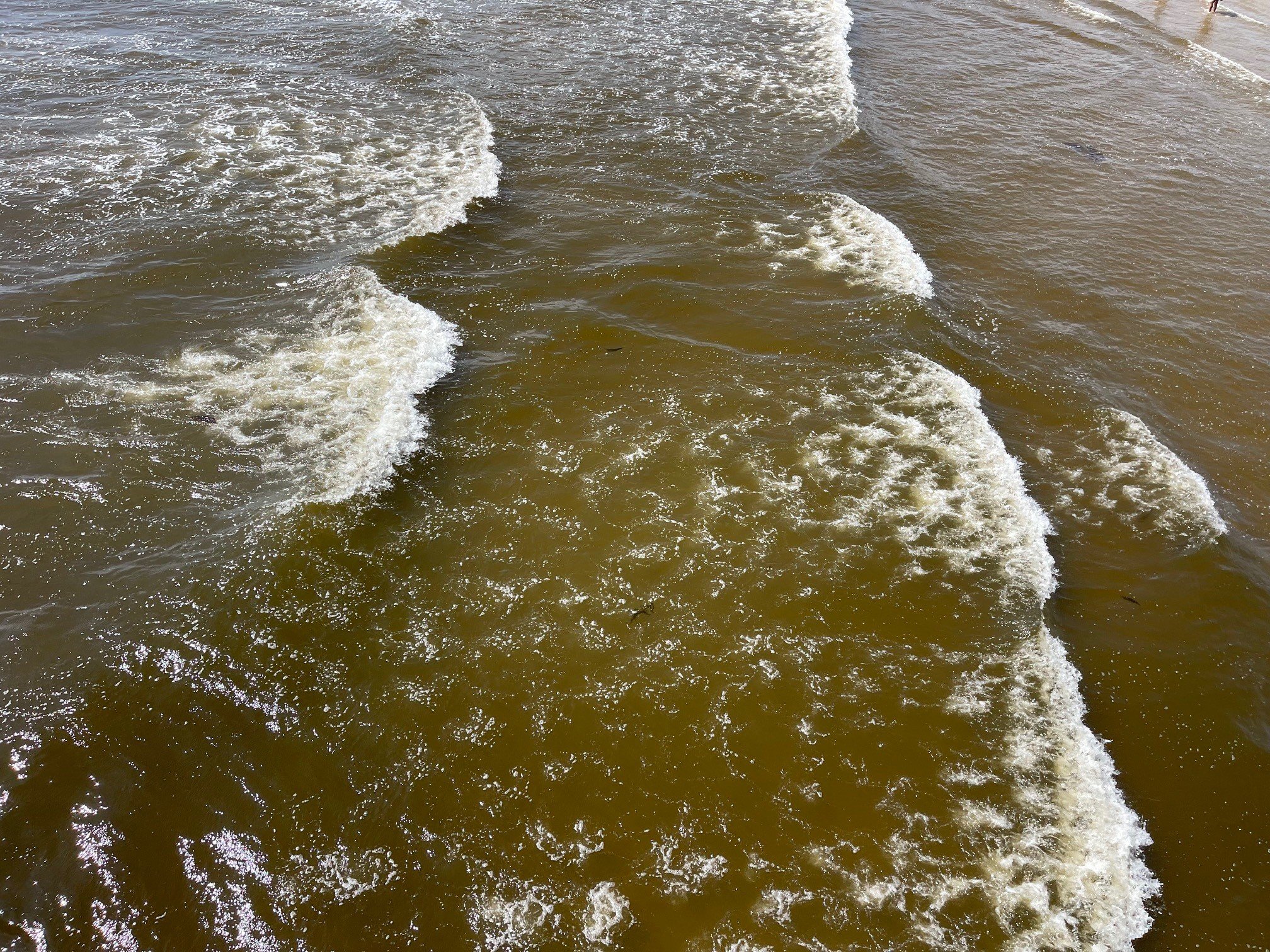
With a 100-mile algal bloom off the coast of Southwest Florida and tar balls washing up on the state’s Southeast coast, the past few weeks have served as a reminder of the importance of clean water and healthy coasts for thriving communities, ecosystems, and economies.
Red Tide & Fish Kills on the Southwest Coast
In recent weeks, Southwest Florida has seen a harmful algal bloom (HAB) extend its coverage over 100 square miles, producing red tide effects from Tampa Bay to the Florida Keys.
Red tide, also known as Karenia brevis, is a type of harmful algal bloom – an overgrowth of algae that far surpasses normal levels and produces toxins. While normal levels of Karenia brevis do not have negative effects, the proliferation during a bloom produces toxic effects for fish and wildlife and harmful health effects for humans. At high levels (10,000 cells per liter), the bloom can create a “kill zone” impacting fish, marine life, and birds. For humans, breathing in the odor of red tide toxins can cause irritation, difficulty breathing, and sore eyes; contact exposure can cause rashes and burning. Beaches and waterways experiencing red tide and HABs are not fit for recreational use.
Although Karenia brevis and red tides have been documented in Florida since the 1800s, these events can be accelerated and exacerbated by increased nutrient pollution (nitrogen and phosphorus) from man-made sources entering the water. Weather and events that result in storm surge and flood waters, increased fertilizer and agricultural runoff, and sewage overage and spills can contribute to degraded water quality conditions that fuel and intensify algal blooms. Florida has long grappled with the public health, economic, and environmental consequences of red tides and harmful algal blooms.
Surfrider fights for improved water quality in Florida through a multi-faceted approach. At the local level, our volunteer chapters’ Blue Water Task Force programs conduct water quality testing at sites throughout their communities to inform the public and encourage government action. At the state level, Surfrider advocates for improvements to our statewide beach water quality monitoring and notification program as well as comprehensive updates and funding for aging wastewater infrastructure. At the federal level, we push for funding through the Clean Water State Revolving Fund to support state action addressing failing wastewater infrastructure.
What can you do if you are concerned about red tide and water quality?
- Stay safe and out of red tide waters. For updates and information about your area, check your local health department’s advisories and Florida Fish and Wildlife Conservation Commission’s Red Tide Status page. You can also call 866-300-9399 for current red tide information.
- Personal actions you can take include making your yard more ocean friendly and picking up your pet’s waste.
- Check out your local Surfrider chapter and join our efforts to improve water quality and protect our coasts!
Tar Balls on the Southeast Coast
Over the weekend, reports (including many from Surfrider members) rolled in about tar balls on the beach and in the Atlantic Ocean off the coast of Southeast Florida. Balls were reported from Port Everglades to the north Palm Beaches. Local authorities, the Florida Department of Environmental Protection (FDEP), and the U.S. Coast Guard were alerted to the sightings and have conducted ongoing monitoring and investigation.
FDEP describes tar balls as weathered lumps of semi-solid oil that have a sticky consistency. They form through the combination of viscous hydrocarbons in oil with debris found in water over an extended period of time. Tar balls are most commonly the result of offshore oil production, drilling, and discharges from marine transportation. Natural seepage from the ocean floor can also be a source of tar balls.
Tar balls are persistent in marine environments – capable of traveling hundreds of miles – and can disrupt marine life and have negative impacts on coastal ecosystems. For humans, brief, occasional contact with a small amount of oil is not typically harmful but the public should avoid contact as much as possible. As a nuisance to beachgoers (sticking to skin, clothes, and boards) and an unwelcome sight and smell, tar balls make areas less appealing to visitors and can reduce tourism. For years after the Deepwater Horizon Oil Spill in 2010, tar balls continued to wash up on the shores of Alabama, Louisiana, Mississippi, and Florida, extending the disaster’s economic and environmental fallout for coastal communities and businesses.
While the source of the tar balls washing up in Southeast Florida has not been confirmed, the tar balls’ unwelcome presence reminds us how much we treasure a healthy, clean ocean and beach. Surfrider’s core mission is to protect and enjoy our ocean, coasts, and waves for all – and we advance that mission at the local, state, and federal level in a variety of ways. At the local level, our Florida chapters lead regular beach clean-ups (*but leave the tar balls to the professionals*) and pursue local laws to keep our beaches clean. At the state level, we support legislation and policies that protect our ocean and coast in Florida. At the federal level, we advocate for widespread protections against new and expanding offshore oil exploration and drilling.
What can you do if you are concerned about tar balls and ocean protection?
- If you encounter tar balls, you can report it to the U.S. Coast Guard’s National Response Center by calling 800-424-8802.
- Check out your local Surfrider chapter and join our efforts to protect our ocean and coasts in Florida!
- Learn more about Surfrider’s federal efforts to restore and expand ocean protections while opposing new offshore drilling. Sign on to our Drilling is Killing petition to let Congress know they must support critical ocean protections.
